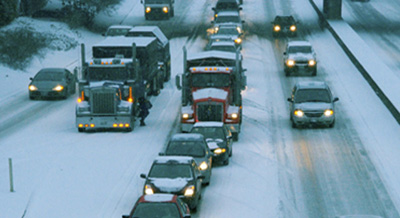The late December winter storm and its frigid temperatures caused gas prices to spike, with refineries as far south as Texas and the Gulf Coast forced to shut down temporarily.
The storm also caused holiday travelers to fuel up and hit the road early to beat the bad weather, leading to a spike in overall gas demand.
The national average for a gallon of gas rose 12 cents over a week to hit $3.22 as of Jan. 3.
“The cost of gas will likely rise a bit more before this surge stalls due to less expensive oil and a return to seasonal driving patterns,” said Andrew Gross, AAA spokesperson. “But 2022 will go down as a record year with a national annual average of $3.96. According to fuel expert Tom Kloza of OPIS, that’s 40 to 50 cents more than the previous peak years of 2011 through 2014.”
According to data from the Energy Information Administration (EIA), gas demand rose from 8.7 to 9.3 million b/d over the last week of 2022. Meanwhile, total domestic gasoline stocks fell by 3 million bbl to 223 million bbl. More demand and less supply pushed pump prices higher.
The Jan. 3 national average of $3.22 is 20 cents less than a month ago and six cents less than a year ago.
The nation’s top 10 largest weekly increases: Delaware (+33 cents), Florida (+30 cents), Maryland (+25 cents), Michigan (+21 cents), Texas (+20 cents), Ohio (+20 cents), South Carolina (+20 cents), Missouri (+20 cents), Alabama (+18 cents) and Wisconsin (+17 cents).
The nation’s top 10 most expensive markets: Hawaii ($5.02), California ($4.42), Nevada ($3.97), Washington ($3.86), Oregon ($3.73), Alaska ($3.71), Pennsylvania ($3.63), Washington, D.C. ($3.47), Idaho ($3.43) and New York ($3.41).
Source: AAA










Abby Andrews